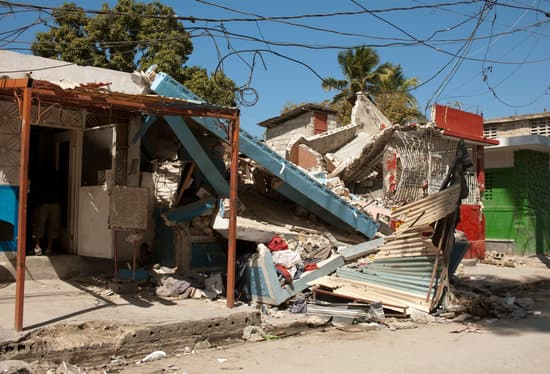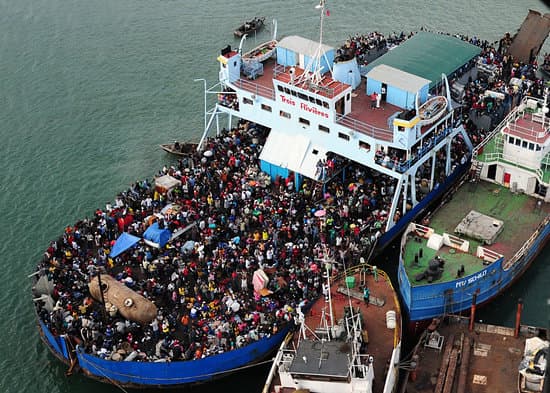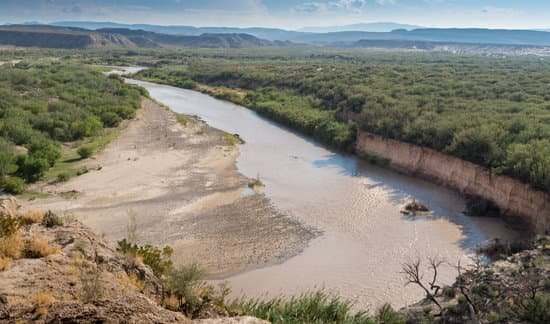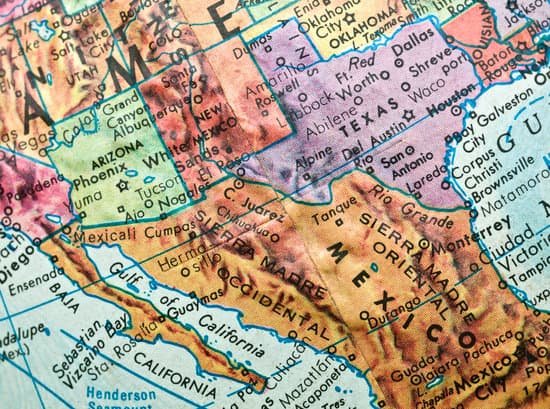The thousands of Haitian migrants who reached the Texas-Mexico border in September were met with stiff opposition from U.S. and Mexican authorities, with many later permitted entry into the United States, others put on expulsion flights to Haiti, and some others returning to southern Mexico. As dramatic and desperate as the scenes at the border were, this migration was years in the making and follows a long path that Haitians have been forging through South and Central America for more than a decade. In many cases, the migrants forcibly returned to Haiti had not been to their native country in years.
Although Haiti has seen significant political crises and natural disasters in 2021—including the July assassination of Prime Minister Jovenel Moïse and, in August, a 7.2 magnitude earthquake followed days later by Tropical Storm Grace—most Haitians who reached the U.S. border were not fleeing these recent challenges. They are, instead, part of a generation of Haitians who have migrated since their country’s devastating 2010 earthquake, which caused more than 217,000 deaths and left more than 1.5 million homeless. Many of these migrants first attempted to settle in Brazil, then Chile, then went to countries farther north, as local conditions changed and grew increasingly inhospitable. The relaxation of COVID-19-related border restrictions has eased their path northward in 2021, and the election of President Joe Biden may have led to some perceptions that migrants would be permitted to enter the United States. Propelled by these push and pull factors, thousands of other Haitians in South America appear to be poised to undertake the arduous, often dangerous journey to reach the United States.
The journey has resulted in dashed hopes and heartbreak for the approximately 5,400 Haitians who, as of September 30, were returned to their country of origin by U.S. officials under a public-health provision preventing access to asylum. For them, the conditions are bleak. The August 2021 earthquake and tropical storm led to the deaths of at least 2,200 people in western Haiti and an estimated 980,000 experiencing food insecurity. In September, the U.S. envoy to Haiti resigned in protest of the expulsions, which he described as “inhumane” and “counterproductive.”

South America: Formation of Brazilian and Chilean Diasporas
Following the 2010 earthquake, Haitians migrated to a number of countries, chief among them Brazil, where an estimated 85,000 arrived between 2010 and 2017. At the time, Brazil promised ample construction jobs ahead of the 2014 World Cup and the 2016 Summer Olympics. The Brazilian government also offered humanitarian visas to certain Haitians displaced by the earthquake. Additionally, between 2010 and 2015, 48,000 Haitians requested asylum, and significant arrivals continued at least through 2019, when nearly 17,000 Haitians sought protection—more than any other nationality except Venezuelans. As of 2020, Brazil’s Haitian population had grown to an estimated 143,000.
However, after the 2016 job booms from the games wore off, Brazil’s economy stagnated and corruption and political instability grew. Many Haitians already worked longer hours and earned lower wages than Brazilians, and the economic downturn exacerbated their challenges. Those factors, plus persistent racism and growing anti-immigrant sentiment amid the 2018 election of populist President Jair Bolsonaro, drove some Haitians to see Brazil as an increasingly impermanent waystation.
For those who left, Chile became the top destination. In the mid-2010s, Chile was among the region’s most politically and economically stable countries, and until 2018, Haitians could enter without a visa. In 2015, more than 12,000 Haitians arrived in Chile, and this number exceeded 103,000 in 2017.
However, the 2017 election of center-right President Sebastián Piñera led to immigration restrictions. Chile began requiring visas for Haitians in 2018. That year, around 27,000 Haitian entries were recorded. Then, in 2019, more Haitians left Chile than entered.
These policy changes came amid growing anti-Black and anti-immigrant discrimination, along with limited job opportunities. In a 2019 survey of immigrants in Chile, Haitians were the least likely to be employed and reported the most workplace discrimination.

Northward Bound: In Transit through Central America
From Brazil or Chile, Haitians must pass through multiple countries before reaching Mexico. This journey can take anywhere from a few months to a few years, depending on migrants’ resources, time spent in detention centers, stopovers for short-term work, or connections to smugglers. The most physically demanding and dangerous part of the journey is across the Colombia-Panama border, in a region known as the Darién Gap. Migrants must hike across the 150-kilometer (93-mile) jungle, which typically takes between four and 11 days, depending on the season. Migrants frequently run out of food, are robbed, are swept away by rivers during flash floods, or are otherwise injured while crossing.
According to Panama’s border service, Haitian migrants did not begin to arrive consistently until 2016, when nearly 17,000 crossed. This was at least in part prompted by Hurricane Matthew, but can also be attributed to changing socioeconomic and political dynamics in Brazil. Since then, Panama has relied on a policy called “controlled flow” (flujo controlado) to receive migrants in camps in southern Panama where they are registered, screened for security purposes, vaccinated, and from where transportation is arranged for them to move northward toward Costa Rica.
With the significant increase in Haitian—and Cuban—migrants transiting through the region since 2016, Central American countries have struggled to receive them. Nicaragua notably closed its border in late 2015, leaving many Haitians and Cubans stuck for months in Costa Rica. As a result, 2016 was not only the first year that large numbers of Haitians began travelling through Central America, but also the first time that they were trapped in limbo during transit.

Mexico
As of this writing, there are no large established Haitian communities in Central America, but the same cannot be said for Mexico. In 2016, an estimated 40,000 Haitians reached the northern Mexican border city of Tijuana. Although fewer Haitians arrived in subsequent years, many of the previous arrivals have remained in the country, either waiting to cross into the United States or settling permanently.
This is in part because many of Mexico’s recent policies have resulted in Haitians spending extended periods of time there. In mid-2019, following pressure from the United States, Mexico stopped issuing exit permits (salvoconductos), which authorities had previously given to apprehended migrants from outside the region whom Mexico had difficulty deporting. These documents allowed migrants to transit through the country toward the United States.
In response to the end of exit permits, some Haitians applied for asylum in Mexico, although long wait times and low approval rates dissuaded many. Some were issued one-year humanitarian visas (visas por razones humanitarias), others were declared stateless and issued residency permits, and yet others attempted to find a clandestine way out of southern Mexico. In some cases, legal statuses were provided to Haitian migrants without their consent or full understanding.
Then, in late 2019 and early 2020, Mexico began deporting larger numbers of Haitians […] According to Mexico’s Secretariat of the Interior, between 2013 and 2018, fewer than 1 percent of Haitian migrants who were apprehended in Mexico were deported to their country (118 in total). But in 2019, Mexico deported more than 6 percent of apprehended Haitians (263 overall) and nearly 20 percent in 2020 (341).
Deportations have declined so far in 2021. […] Meanwhile, Haitian asylum requests in Mexico have been on the rise. In July and August, Haitians for the first time represented the most common nationality of asylum applicants. This is in part because of the growing numbers of Haitians reaching Mexico from Central and South America, but also due to the bottleneck feature of Mexico’s immigration policy, which forces Haitian migrants to either apply for status to leave southern Mexico, wait indefinitely, or travel covertly.

The United States
The United States hosts the largest Haitian immigrant population, with an estimated 705,000 as of 2020. Many Haitians have been in the United States for years, if not decades. Historically, irregular Haitian migration took place largely by sea, but interdictions along that route have remained negligible in recent years. Instead, arrivals at land borders have increased consistently. From October 2020 through this August, U.S. Border Patrol made more than 30,000 apprehensions of Haitians, nearly all of them at the U.S.-Mexico border. This marks the most Haitians ever apprehended at the U.S. land border, and the second largest overall since 1992, when authorities intercepted Haitians 38,000 times at sea.
This growth is notable in part because Haitian migration to the United States was already increasing prior to Haiti’s mid-2021 crises, reinforcing the evidence that migrants reaching the United States in recent weeks have likely been on the move for years. That said, it is worth noting that the Biden administration has offered Temporary Protected Status (TPS) to Haitians who were in the United States as of July 29, 2021, granting them temporary work authorization and protection from deportation for 18 months. While this action will not affect Haitians recently attempting to cross the border, it did extend protections to 55,000 Haitians already with TPS in the United States and will allow an estimated 100,000 more to apply for new protection. Misinformation about TPS eligibility and about the general availability of legal status in the United States may have been one factor for migrants trying to reach the U.S. border, along with push factors out of South America and the easing of some COVID-19-related travel restrictions.

A Population Quietly on the Move
While on the move, Haitian migrants in Latin America have confronted particular challenges, including intense anti-Black and anti-immigrant sentiment. Being refused work, not being allowed to seek medical treatment or report a crime, and other instances of discrimination often mark the experiences of Haitian migrants in ways not experienced by non-Black migrants. Additionally, Haitian migrants often lack access to translators or interpreters. Non-Spanish and non-Portuguese speaking Haitians are particularly disadvantaged when seeking legal protections, social services, or jobs.
While data do not show a significant uptick in emigration from Haiti immediately following the recent political and humanitarian crises, these events nonetheless serve as a backdrop that may have played into the decisions of migrants already in Central and South America to seek out new destinations. Still, emigration from Haiti will likely grow in coming months and years, fanning out to countries throughout the Americas where migrants may have families, friends, or work opportunities. As this migration continues, it will be important to distinguish between recent and earlier Haitian waves of migration. Analyses of Haitians’ movement must also to adopt a regional lens that takes into account this decade of hemispheric migration and Haitian migrants’ unique dynamics and challenges.
This article was reprinted with permission by Migration Policy Institute. This article was written by Caitlyn Yates and published by MPI’s online journal, the Migration Information Source on September 30, 2021.
